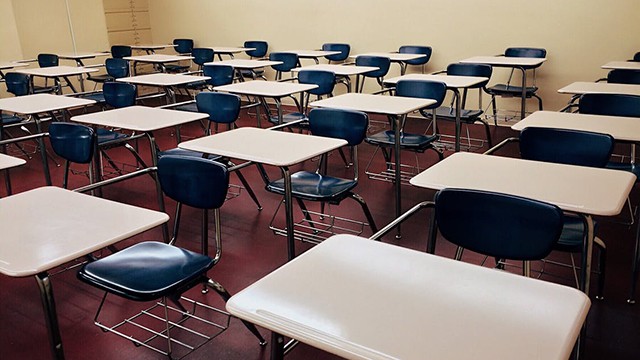Ontario Teachers Calling for Action on Student Violence
Published September 25, 2017 at 11:51 am

Being a teacher is one of the most rewarding professions in our society. As a teacher, your contribution to shaping young minds can have lasting effects on people’s lives. But in order to be successful, one must have infinite patience, understanding, tolerance and an innate ability to balance empathy and discipline.
Unfortunately for teachers, they sometimes encounter workplace violence. In the last few years, there has been an uptick in the number of reported incidents of student violence in schools against teachers and other educational staff.
Students are acting out by throwing furniture, smashing computers, spraying paint, hitting, punching, kicking and biting their peers and adults, former teacher Linda Schultz recently said during a radio interview. These are children as young as four with behavioural problems and mental health diagnoses.
Workplace violence may sound straightforward, but the definition is rather broad, as defined under the Occupational Health and Safety Act (OHSA).
The definition includes actions that result in physical injury as well as attempts to cause that injury and threatening statements or behaviours. The source of the violence is a “person” in the workplace, adult or child. The victim is a worker. For members of the Elementary Teachers Federation of Ontario (ETFO), their workplace is typically the school setting. Here is the OHSA’s definition:
-
The exercise of physical force by a person against a worker, in a workplace, that causes or could cause physical injury to the worker.
-
An attempt to exercise physical force against a worker, in a workplace, that could cause physical injury to the worker.
-
A statement or behaviour that it is reasonable for a worker to interpret as a threat to exercise physical force against the worker, in a workplace, that could cause physical injury to the worker.
The ETFO recently announced they were launching a campaign to address this problem of school violence.
It’s not just a matter of behavioural problems in students, but the ETFO also believes government funding has contributed to the rise in student violence in Ontario schools. In their “Call to Action,” the ETFO says more than half of elementary school principals reported restrictions on waiting lists for special education services, according to People for Education. Twenty-six per cent of elementary schools report that not all identified students are receiving the recommended support.
The ETFO has called for the provincial government to increase its funding for special education teachers, educational assistants, psychologists, behavioural therapists, school support counselors, child and youth workers and speech-language pathologists. This funding would improve early interventions. In response, the Ministry of Labour and Education have released a letter addressing the ETFO’s concerns and advised the following measures:
-
For the 2017-18 school term, the Ministry of Labour will be conducting an enhanced initiative on workplace violence in schools. This will involve all district school boards in Ontario being visited by an enforcement team that may include a manager, regional program coordinator and an inspector to review school boards’ obligations under the OHSA. Prior to this initiative, MOL inspectors will receive refresher training on the Act’s requirements as they apply to school boards.
-
The government would be looking for more information sharing between the government and educators, although there were concerns raised about sharing pertinent information if housed in a particular student’s Ontario Student Record (OSR).
-
The government would also work with the ETFO working group to figure out how to streamline and clarify the existing reporting requirements for violent incidents in schools.
The ETFO also provides some background information in a few articles about violence in the early years (see here), and addressing violence in the workplace (see here). They also provide information about developing a student safety plan for at risk students who are prone to self harm.
One idea that has not been mentioned is whether the presence of police would be required as teachers deal with how to handle students being violent. In February, a six year old girl was restrained and handcuffed by police at a Mississauga school after staff could not restrain her. The police presence is not just about dealing with violent students; Toronto had what was known as a school resource officer (SRO) for the last 10 years as a way to provide a bridge between police and communities such as in public schools.
But the Toronto District School Board (TDSB) recently voted to temporarily suspend the program amidst a vocal outcry from activists who believe there should be no police in schools at all. While the suspension of the SRO is unrelated to the issues pertaining to student violence, I believe there are some unintended consequences.
If there are going to be incidents where the students get violent to the point that teachers and education staff are not equipped to handle it, then shouldn’t the police be involved (at that point) in order to prevent anyone else, including the violent student, from hurting anyone else or themselves? Keeping the police from entering the premises in order to stop violent incidents seems counterintuitive.
The need for police, as a last resort, should be considered as another way to address student violence as well.
What do you think of the ETFO’s recommendations?
insauga's Editorial Standards and Policies advertising





